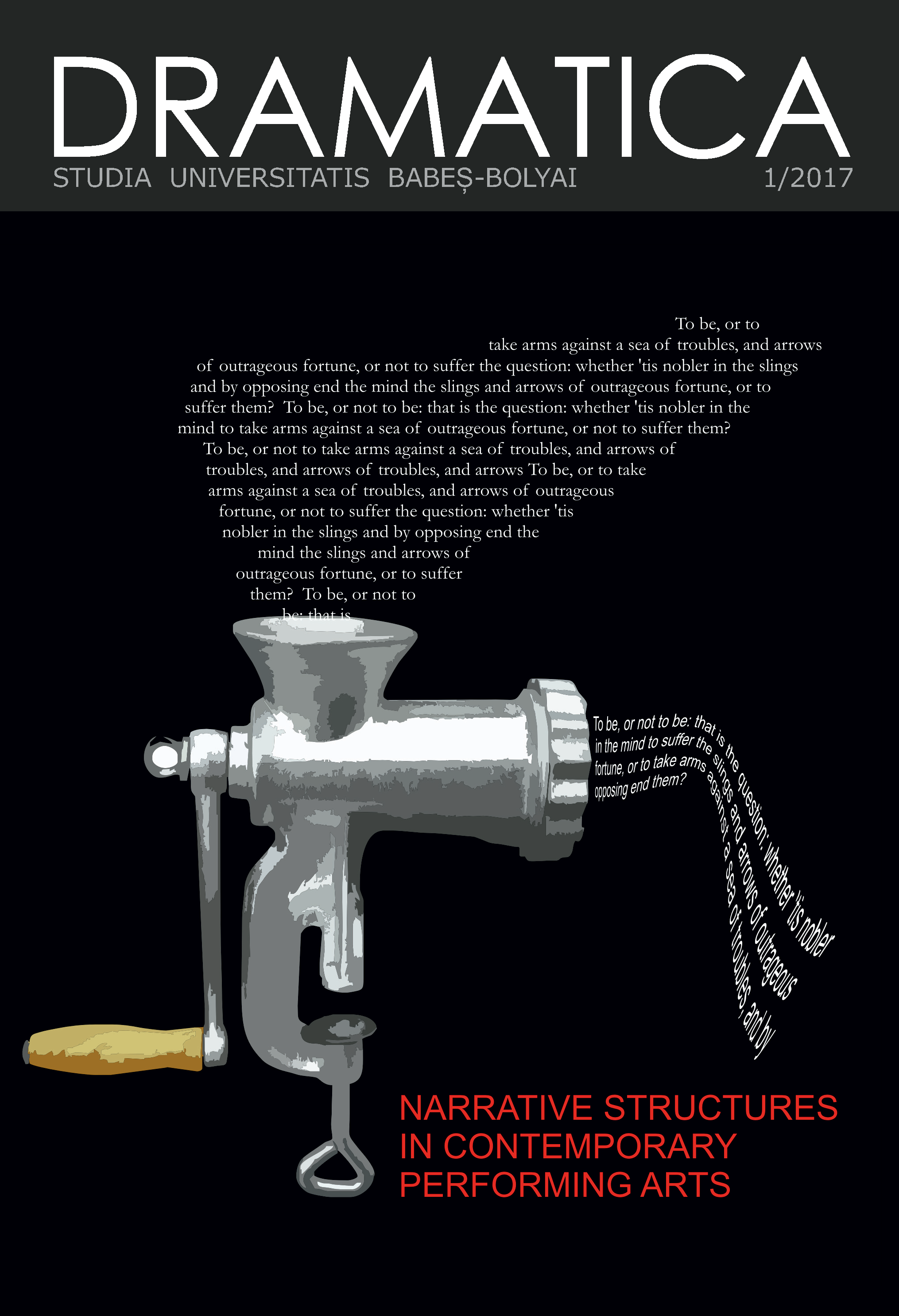First Impression in Theatrical Casting
DOI:
https://doi.org/10.24193/subbdrama.2017.1.11Keywords:
casting, director, actor, first impression, error, observed, observerAbstract
In theatre, casting is a complex process that is less frequently approached by specialized analyses, in comparison with film casting. This article seeks to emphasize the mechanisms involved in the shaping of the first impression, which matches the first chronological stage in the casting process. I will define the first impression, in the context of theatrical casting, as the manner of establishing the actor’s image following the analysis of his/her appearance and attitude – shown more or less knowingly – by a stage director, within several seconds of their first meeting. Usually, the directors’ trust in their own intuition, in the “reading” of the face, of the behavior and skills of those who appear in front of them, is absolute. But there have been quite a few cases where appearance has been contradicted by reality. On the other hand, of course, impressions cannot be shaped by the strict rules of logic, since the director is not a machine, but a human being who does not act only on rational factors, but also on affective and emotional ones. In the shaping of the first impression – a process that occurs in a limited timeframe, having a spontaneous and almost unconscious nature – an important role is played by perception, attention, observation, during which various errors of assignment may occur. All these elements turn casting into a unique event that focuses on a living, condensed and dramatic relation between the projections of two protagonists, the actor and the director, observers and observed alike[1].
[1]. Paper presented in the National Conference of Doctoral Students, organized by the Doctoral School of Theatre and Film of the “Babeș-Bolyai” University of Cluj-Napoca, 8-9 December 2016.
References
Asch, Solomon Elliott. “Forming impressions of personality.” Journal of Abnormal and Social Psychology 41 (3/1946): 258-290.
Banu, George. Beyond the Role or the Unruly Actor. Theoretical Miniatures, Portraits, Sketches. Translated by Delia Voicu. Bucharest: Nemira, 2008.
Chițan, Simona, and Mihaela Mihailov. Victor Rebengiuc – the Man and the Actor. Bucharest: Humanitas, 2008.
Feyereisen, Pierre. “Brain pathology, lateralization, and nonverbal behaviour.” In Fundamentals of Nonverbal Behavior, edited by Robert Stephan Feldman, 31-72. Cambridge: Cambridge University Press, 1991.
Goffman, Erving. The Presentation of Self in Everyday Life - Romanian Version. Bucharest: Comunicare.ro, 2007.
Ichim, Florica. Conversation with Vlad Mugur. Bucharest: Fundația Culturală Camil Petrescu, 2000.
Picon-Vallin, Beatrice (ed.). Ariane Mnouchkine. Translated by Andreea Dumitru. Bucharest: Fundația Culturală Camil Petrescu & Revista Teatrul Azi - supliment, 2010.
Treisman, Anne. “How the Deployment of Attention Determines What We See.“ Visual Search and Attention 14 (4-8) (1/2006), 411–443.
Downloads
Published
How to Cite
Issue
Section
License
Copyright (c) 2017 Studia Universitatis Babeș-Bolyai Dramatica

This work is licensed under a Creative Commons Attribution-NonCommercial-NoDerivatives 4.0 International License.


